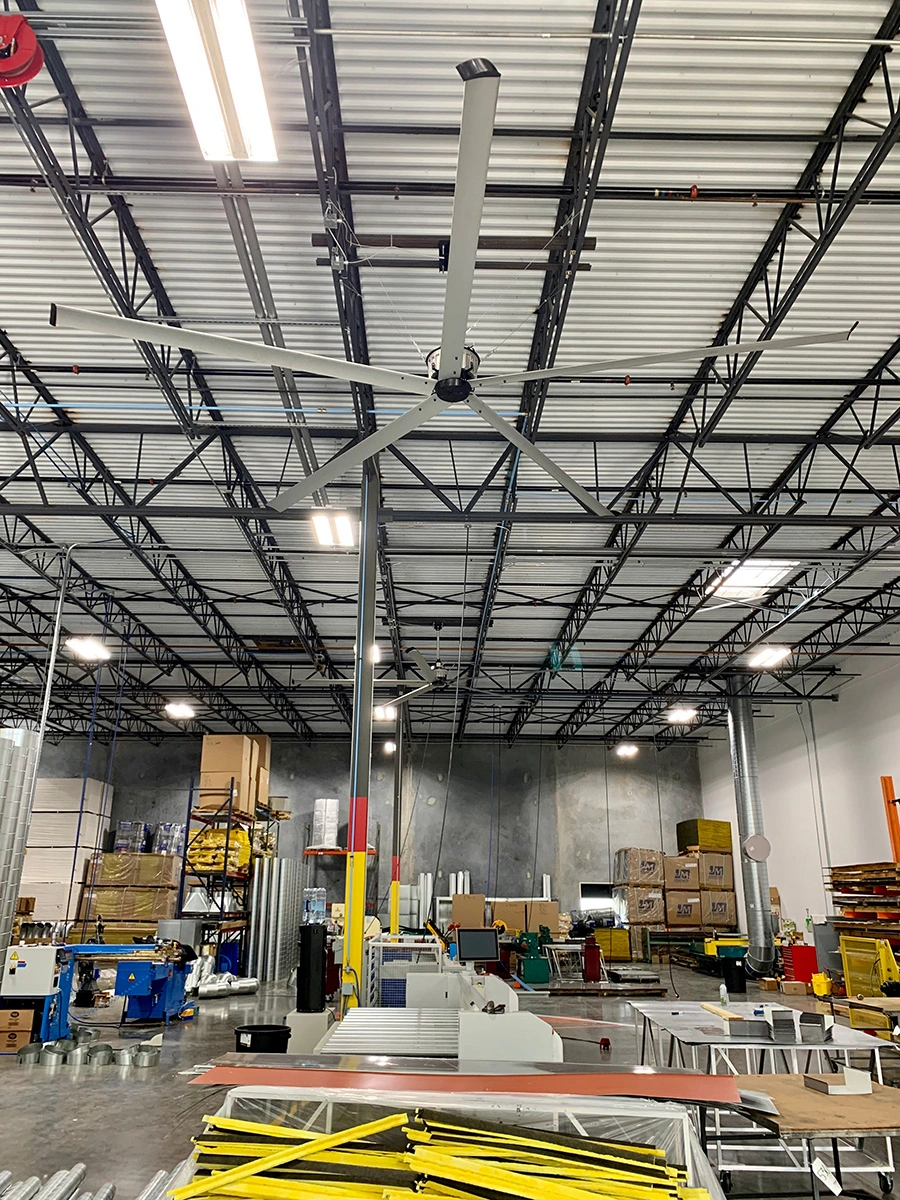
Adequate air circulation is essential for optimizing industrial workplaces. Proper fan placement can improve air quality, decrease energy costs, and greatly increase comfort and safety levels. To achieve these advantages, you must know where to position your fans for the best results.
The Significance of Fan Placement
Before we go into the specifics of fan placement, let’s talk about why it’s important. Fans are designed to move air around a room, and their efficiency is greatly influenced by where they are placed. When placed correctly, they can:
- Distribute air more evenly to avoid hot or cold patches.
- Assist in dispersing impurities and toxins, creating a more hygienic workplace.
- Keep the area at a steady temperature to give workers a more comfortable working environment.
- Cut energy expenses by assisting HVAC systems in operating more effectively, which will result in less energy being used.
Assess Your Space
Evaluating your area is the first step in placing fans effectively. Take into account the following factors:
- Area Size and Shape: Compared to smaller, contained places, larger, open areas call for different tactics.
- Challenges: Locate any walls, storage, or equipment that might impede airflow.
- Heat Sources: Identify the locations of the main heat sources, such as machinery or sunlight.
- Ventilation: Examine the current ventilation setups and their effects on the possible locations of fans.
Placement Techniques for Various Fans
Ceiling Fans
Large, wide spaces are perfect for ceiling fans. Here’s how to get the most out of them:
- Install ceiling fans at least 10-12 feet above the floor. When the ceiling is particularly high, use downrods to move the fan closer to the area that is being used.
- Place ceiling fans 10 to 12 feet apart to guarantee uniform airflow. Try employing several fans in larger areas.
- In the summer, turn the fan blades counterclockwise to provide a cool breeze. To move warm air around in the cold, switch to a slow, clockwise rotation.
Floor Fans
The ability to relocate floor fans is what makes them so adaptable. Here are some pointers for where to put them:
- Place floor fans close to heat sources such as machinery or other heat-producing devices to help disperse hot air and maintain a cooler environment.
- Place fans next to workstations or in aisles to give employees direct airflow, which will improve comfort.
- Adjust the angle and tilt of floor fans to focus airflow where it is most needed. Make sure they aren’t blowing straight into heavy items or walls that could block ventilation.
Wall-Mounted Fans
Wall-mounted fans are ideal for places with limited floor and ceiling alternatives.
- Mount fans 7-8 feet above the floor to minimize interfering with workspace tasks while yet allowing for sufficient air circulation.
- Direct airflow into the inhabited area by angling the fans downward. This is especially helpful for dispersing smells or heat.
- Wall-mounted fans should also be evenly positioned to guarantee uniform circulation throughout the space, much like ceiling fans.
Exhaust Fans
Exhaust fans are essential for eliminating pollutants, odors, and stagnant air.
- Position exhaust fans near sources of fumes, dust, or other contaminants to effectively remove them from the premises.
- Place exhaust fans near windows or vents, or other ventilation points to facilitate the air exchange between the inside and outside.
- Install exhaust fans at higher spots in the space, where hot air and fumes tend to rise.
Special Considerations
Environments with High Heat
Fan placement is even more crucial in environments that experience severe heat, such as foundries or kitchens. Consider these recommendations:
- Use High-Velocity Fans: High-velocity fans can provide more effective cooling in hot environments.
- Position Strategically: Install fans at regular intervals to create an airflow that distributes heat away from workstations and toward exhaust points.
Humid Conditions
Lowering moisture levels is the main goal for humid areas like greenhouses and laundry rooms.
- Use dehumidifiers in addition to fans to lower the amount of moisture in the air.
- Place fans in a cross-ventilation orientation to help push out damp air and bring in dry air.
Dusty Settings
Air quality is a major concern in dusty areas, such as workshops or construction sites.
- Air purifiers can be used in conjunction with fans to remove dust particles from the air.
- Fans with integrated filters can assist in capturing dust and stop it from circulating.
Maximizing Productivity: Tips and Tactics
Take into account these extra suggestions to maximize the effectiveness of your fan placement strategy:
- To make a complete cooling system, combine floor fans, directed fans, and ceiling fans.
- Automate your fans with timers and thermostats to make sure they operate only when necessary.
- Ensure that your staff members are aware of the fan placement strategy and invite them to share their opinions on how comfortable they are.
- Evaluate the success of your fan placement on a regular basis, and be prepared to adjust as necessary.
- Seasonal changes may impact your cooling requirements. Be ready to adjust your fan placement strategy as needed.
Conclusion
For your industrial fans to operate as efficiently as possible, proper fan placement is essential. Through space assessment, knowledge of fan types, and special environmental considerations, you may design an ideal airflow system that lowers energy costs while enhancing comfort and improving air quality. Maintaining your fans at optimal performance through planned maintenance and strategic modifications will make the workplace healthier and more productive.
Experience the ultimate in airflow with Refresh Fans. Our advanced, high-performing HVLS fans are made to be as comfortable and efficient as possible. They maximize air circulation, making them ideal for any industrial setting. Get in touch with us for a free quote.